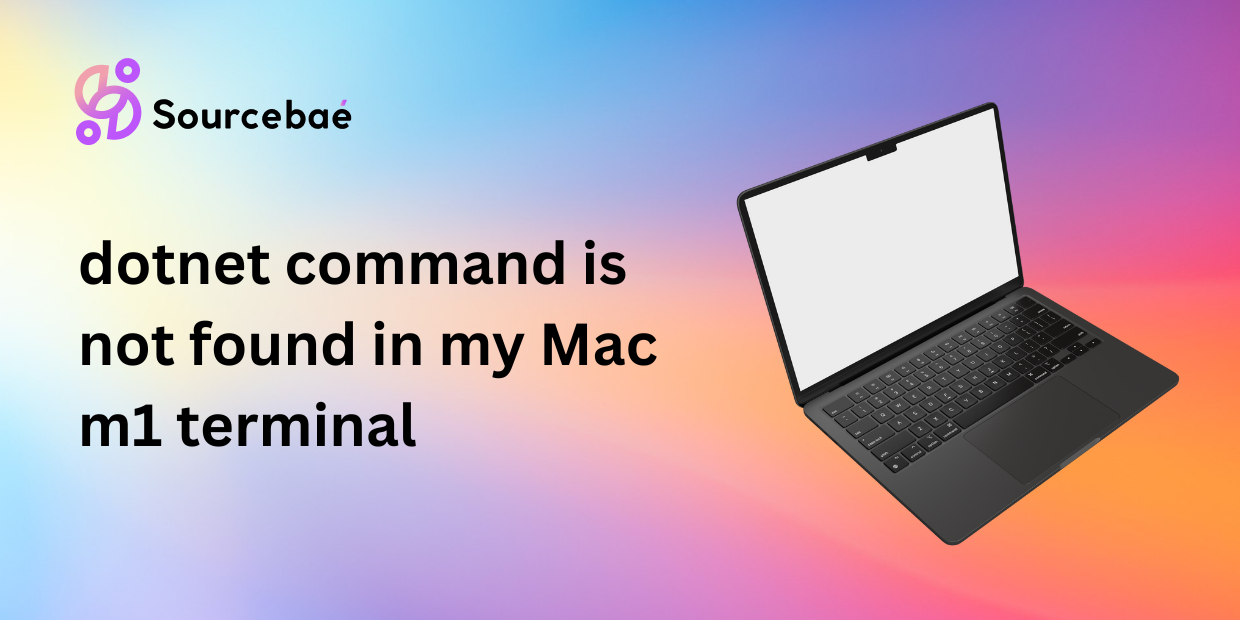As a developer, facing the “dotnet command is not found” issue on your Mac M1 terminal can be frustrating. This common error message usually indicates a configuration or installation problem, especially prevalent among users who’ve transitioned to Apple’s powerful M1 (Apple Silicon) chips.
In this detailed blog post, you’ll understand exactly why this issue occurs and how you can seamlessly resolve it. We’ll explore step-by-step solutions while addressing common installation and configuration pitfalls for .NET SDK on MacOS M1 devices.
Understanding .NET SDK and Mac M1 Compatibility Challenges
Overview of the .NET Framework & SDK
.NET framework is a popular, open-source development platform created by Microsoft. It allows developers to build robust, scalable applications across various operating systems: Windows, Linux, and macOS. .NET SDK (Software Development Kit) is essential as it provides the necessary components for developing, executing, and managing .NET applications.
Why Mac M1 Users Encounter Compatibility Challenges Initially
Ever since Apple transitioned to using ARM-based M1 chips, many software tools and development environments initially faced compatibility hurdles. Because .NET SDK was first tailored predominantly to x86/x64 architecture, developers installing the SDK on Mac M1 frequently encounter path and dependency issues, notably the dreaded error:
zsh: command not found: dotnet
Understanding the “dotnet command is not found” Error Message
Common Causes of the Error Message for Mac M1 Users
When your Mac M1 Terminal prompts the error “dotnet command is not found,” it’s generally caused by:
- Incorrect or incomplete
.NET SDKinstallation - PATH variables not configured correctly
- Installation of an Intel version instead of the ARM-native version
- Permissions or access-related issues on MacOS system folders
A thorough solution involves correctly performing each step from installation to proper environment configuration.
Installation Prerequisites You Should Check First
Before installing or troubleshooting .NET SDK on Mac M1, ensure these prerequisites are in place:
Homebrew
Homebrew is the macOS package manager, simplifying software installations.
Check if Homebrew is already installed by:
brew --version
If Homebrew isn’t installed, set it up quickly through their official website: Follow the simple instructions provided there.
Terminal Emulator
Ensure your Terminal emulator supports Apple Silicon natively. The default Terminal application on macOS is perfectly suitable. However, third-party terminals like iTerm2 need to be installed with Apple Silicon builds for optimal compatibility.
Step-By-Step Guide to Resolve the “dotnet command not found” Error on Mac M1 Terminal
Step 1: Verify if .NET SDK is Installed Correctly
Run the following command:
dotnet --version
- If you see a version number, you have
.NET SDKinstalled. - If “command not found” still appears, you need a fresh installation or adjustments to your settings.
Step 2: Installing .NET SDK for Mac M1 (ARM Native Version)
You have two reliable methods to install .NET SDK:
Method 1: Official Microsoft Installer (recommended)
Visit Microsoft’s Official .NET SDK Downloads, selecting the ARM64 (Apple Silicon, M1) macOS installer.
- Download installer package
- Fully complete the installer instructions provided by Microsoft
- Restart your Terminal app after installation
Method 2: Use Homebrew via Terminal
Alternatively, install via Homebrew using this command:
brew update
brew install --cask dotnet-sdk
Post-installation, .NET SDK typically resides at /usr/local/share/dotnet/.
Step 3: Setting Your Environmental PATH Variables Correctly
On macOS, your terminal application uses configuration files like .zshrc (default on macOS) or .bash_profile to establish command line environments.
Edit .zshrc or .bash_profile:
nano ~/.zshrc
Add the following lines:
export PATH=$PATH:/usr/local/share/dotnet
export PATH=$PATH:$HOME/.dotnet/tools
Apply changes immediately:
source ~/.zshrc
Step 4: Verify Your New Installation
Try this again:
dotnet --info
A successful output will detail your installed SDK version, runtime environments, and other relevant details clearly.
Troubleshooting Common Issues After Installation
If problems persist, check these common pitfalls:
Installed Intel (.x64) Version Instead of ARM Version
Always prefer ARM-compatible (Apple Silicon) installers or packages. If an Intel installer was mistakenly used, uninstall it completely and reinstall using ARM-native builds as demonstrated above.
PATH Variable Changes Not Read by Terminal
Close and reopen Terminal, or explicitly apply changes again with:
source ~/.zshrc
Double-check your PATH setting:
echo $PATH
Ensure the path to dotnet (/usr/local/share/dotnet/ or your installation path) appears.
Permission Issues with dotnet Installation Directory
If dotnet tools or SDKs present permission issues, resolve by:
sudo chmod -R 755 /usr/local/share/dotnet
FAQs – Solutions to Frequently Asked Questions
Can I Run Intel Versions of .NET SDK with Rosetta 2 on Mac M1?
Yes, Rosetta 2 allows compatibility briefly; however, this isn’t recommended for efficiency reasons. Using Apple’s ARM native .NET SDK yields faster and more optimized results.
Why Does brew install dotnet Not Work Directly?
The correct command for installing .NET SDK through Homebrew is:
brew install --cask dotnet-sdk
This ensures installing the complete SDK directly.
How can I Check my Installed dotnet SDKs and runtimes?
Execute:
dotnet --info
This clearly displays SDK versions, paths, and runtimes available.
I’ve modified the PATH variable, but Terminal Still doesn’t Recognize dotnet, How Can I Fix this?
Reapply the changes immediately:
source ~/.zshrc
Verify by:
echo $PATH
Do I need Rosetta 2 to Run Dotnet SDK on M1 Macs?
No, not anymore. The .NET SDK supports ARM-native installations directly, maintaining optimal performance without depending on Rosetta 2.
Additional Tips & Best Practices While Managing Your .NET SDK
- Regularly Update Your
.NET SDK: Periodically use Homebrew (brew upgrade dotnet-sdk) or download the latest official installer. - Monitoring Installed SDK Versions: Regularly execute the command
dotnet --info. - Utilize Version Managers: Consider tools from the community that manage multiple
.NET SDKversions conveniently.
Conclusion: Enjoying Smooth .NET SDK Development on Your Mac M1
Resolving the common issue of the “.NET command not found” error requires correctly installing and configuring .NET SDK specifically tailored for Apple’s M1 Macs. Whether choosing to install manually via official installers or efficiently via Homebrew, following clear steps ensures easy troubleshooting. Maintain your development environment by regularly updating .NET SDK, inspecting versions, and appropriately setting PATH variables, ensuring reliable performance and an enjoyable, efficient coding experience.
Useful Resources:
- .NET SDK Official Documentation for macOS
- Homebrew Official Website
- GitHub .NET Issues & Solutions
- Stack Overflow Community Discussions
This comprehensive guide provided you easy-to-follow solutions to address your Mac M1 terminal “dotnet command not found” error. Happy coding!






